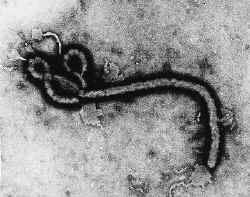A Super-Sensitive Detector

To follow the trail of a terrorist, investigators need to identify extremely small residues of explosives or biological warfare agents. The 11 October PRL describes a new method for detecting molecules in tiny concentrations that is 100 times more sensitive than current methods and could help those investigators. Researchers predict that the method–which places samples on the surface of a silica cube filled with laser light–may one day be able to spot a single molecule sitting on the surface of the cube.
Spectroscopy is the art of identifying atoms and molecules by the way they absorb light over a range of wavelengths. Shining a light beam through a cylinder of gas and collecting the transmitted energy is the usual way to get its spectrum, but for samples where only a few of the interesting molecules are floating around, the light may never interact with the rare molecules.
To find trace concentrations of gas molecules, spectroscopists use “cavity ring-down spectroscopy,” where a laser pulse bounces back and forth many times within a cavity, giving rare molecules many opportunities to absorb the light. The light intensity drops exponentially in time as it is absorbed, with the time scale (“ring-down time”) determined by the rare molecule’s concentration. While this method works well for gases, it doesn’t work for solids or liquids. An additional glass plate must be added to hold the sample in the light path, and “all the extra reflections [off of the plate] would kill the experiment,” says Andrew Pipino, a chemist at the National Institute of Standards and Technology in Gaithersburg, MD.
Now Pipino has come up with a way to keep solid and liquid samples out of the path of the laser light. He starts with a miniature hollow cube of ultra-pure fused silicate glass. Laser light enters the cube through a special prism, and the angle of the incoming light is adjusted so that the super-polished walls of the cube reflect virtually 100% of the light internally. A single pulse of light can circle inside the cube up to 105 times before all its energy escapes from the cube as the pulse “rings down.”
At each internal reflection, an “evanescent” wave is formed and passes outside of the cube. The evanescent wave carries no energy out of the cube unless there is a coating of molecules on the outside of the cube to absorb it. If there is a coating, it soaks up the leaking energy and the intensity of the circling light wave rings-down faster. By measuring the ring-down time in the cavity, Pipino can detect trace amounts of solids, and he predicts that “single molecule detection may one day be feasible.”
Although many have tried, “he is the first guy to make it work,” says chemist Richard Van Duyne of Northwestern University in Evanston, IL. “It will break open the whole field.” The hundred-fold improvement in sensitivity already achieved by the new method opens vast new areas of potential research, says Princeton University chemist Kevin Lehmann, ranging from detecting explosives and biological warfare agents to studying single viruses.
–Mark Sincell
Mark Sincell is a freelance science writer based in Houston, TX.


